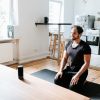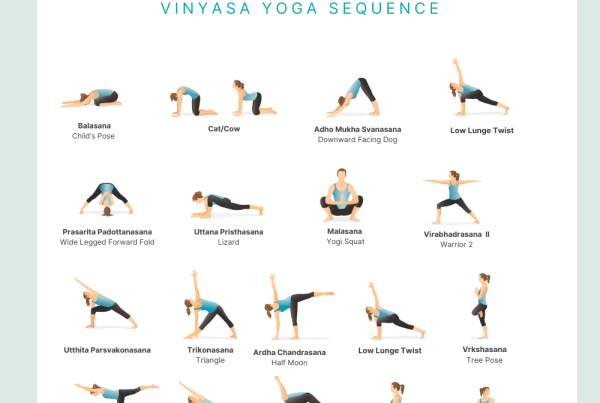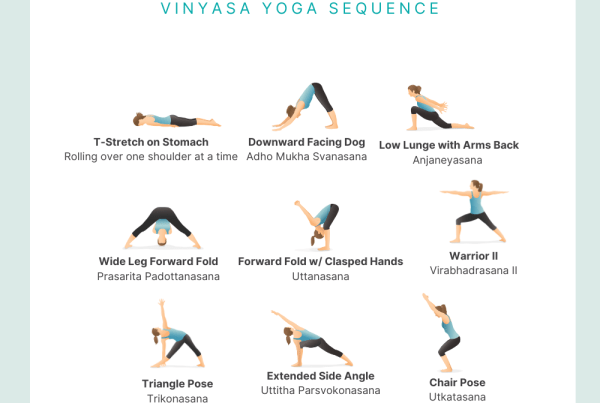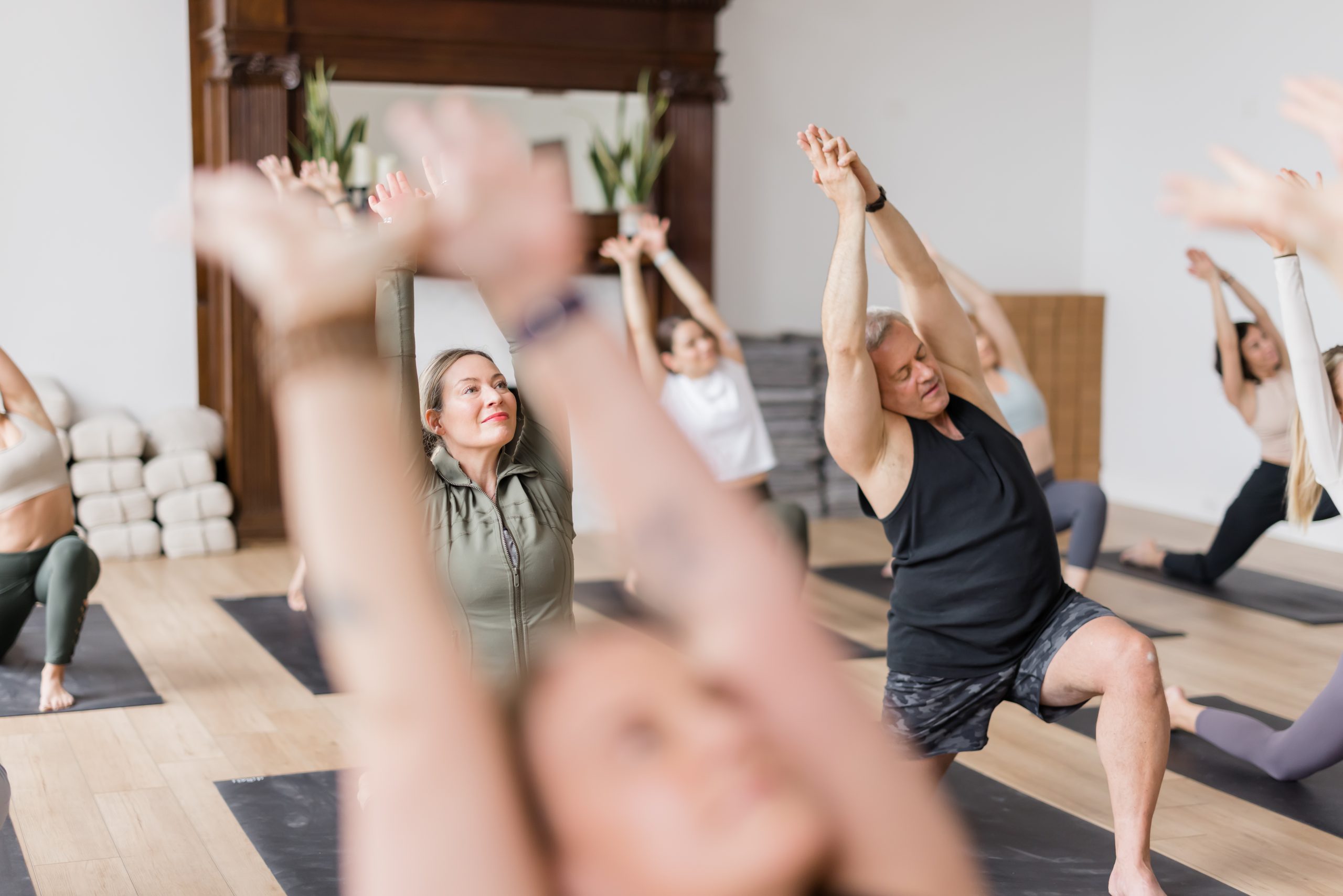
You may have heard that the yoga practice can be made accessible to everyone. Although this is true, it can definitely be a little confusing to wrap your head around. There are so many social media posts and advertisements that showcase people in yoga poses that look impossible! The truth is that yoga is really for everybody and you can find a way into the practice that works for you.
The yoga practice is so much more than the physical yoga poses. Yoga involves working with your mind, controlling your breath, and also moving your body in a way that feels safe for you. It’s always best to find a teacher to work with, but you can certainly practice yoga with some of these simple tips!
Table of Contents:
Why is Yoga for Everybody?
Yoga is more than just coming into a pose with a Sanskrit name and moving through a class that takes up an hour (or so) of your day. When you begin to study yoga, you will realize more and more that yoga is a way of life. It’s a practice that keeps you connected to who you really are and why you’re here.
When you think of yoga in this way, you will begin to see how yoga is really for everybody. When you can connect with your body, your breath, and your mind, you will begin to cultivate more gratitude each day. You’ll see how beautiful your body truly is and how amazing this life here on Earth can be.
Yoga can be studied and practiced by everyone because it asks you to connect to yourself, which is something you can do anytime and from anywhere!
Yoga & accessibility
Yoga’s popularity stems not only from its physical and mental benefits but also from its accessibility. Unlike some forms of exercise that require specialized equipment or a specific environment, yoga can be practiced almost anywhere with minimal equipment. This accessibility makes yoga inclusive and welcoming to people of all ages, body types, and fitness levels. Yoga props play a major role in aiding individuals throughout the practice and practices like chair yoga have become increasingly popular over the years. Additionally, the internet has played a significant role in making yoga more accessible than ever before. Online platforms, such as YouTube and yoga apps, offer a wide range of yoga classes that cater to different needs and preferences. This accessibility allows individuals to practice yoga in the comfort of their own homes, at their own pace, and on their own schedule, removing barriers that may have prevented them from trying yoga in the past.
Furthermore, many yoga instructors and studios offer adaptive yoga classes specifically designed for individuals with physical disabilities or limitations. These classes modify traditional yoga poses to accommodate various abilities, ensuring that everyone can experience the benefits of yoga regardless of their physical condition. By focusing on accessibility, the yoga community continues to evolve and expand, embracing individuals from all walks of life and making yoga a truly inclusive practice.
Yoga is more than just physical postures
If yoga were just about the poses, it would be more of a workout than an actual practice. You’ve probably heard teachers and practitioners refer to yoga as a practice because it’s something to keep working with and returning to. It also goes beyond the physical body.
Moving your body and understanding the yoga poses is certainly a main part of the practice, but it’s not the only part. Once you begin to practice and study yoga, you will realize that the physical part of it is more like an entryway into something much bigger and much deeper.
The Body & The Mind
If you’ve taken a yoga class, you may have noticed that you need to focus your mind on what it is that you’re doing. This is also true for anything you do in life. If you walk across a busy street without paying attention, you’re going to set yourself up for something dangerous. The same can be said for moving your body in any way that isn’t mindful.
It’s important to become friends with your mind! Spend time with it. Notice when you are distracted, anxious, sad, or angry. You are actually practicing yoga when you start to notice the quality of your thoughts and how you respond to certain stressors in your life. This is one way to practice yoga if you’re injured or if you cannot move your body. Yoga is for anyone with a mind and can be practiced by anyone who has the ability to notice their thoughts.
The Breath
There is a word in Sanskrit called “pranayama” which may loosely be translated to “breath control.” In yoga philosophy, working with the breath is one of the practices that’s just as important as yoga asana (the yoga poses). If you can control your breath, you may be able to control your thoughts and also control how you respond to situations you’re faced with.
If you can breathe on your own and feel your inhale and your exhale, you can practice pranayama! If you’re practicing this, you’re practicing yoga. You can practice from anywhere and at any time of the day because some forms of breathwork and energizing, while others are relaxing.
Yoga Poses
If you have any injuries or anything specifically going on with your body, you should always contact your doctor before moving into a physical yoga practice. However, if you know you’re okay to move and you’re not injured, you can try some of these accessible practices:
Low cobra
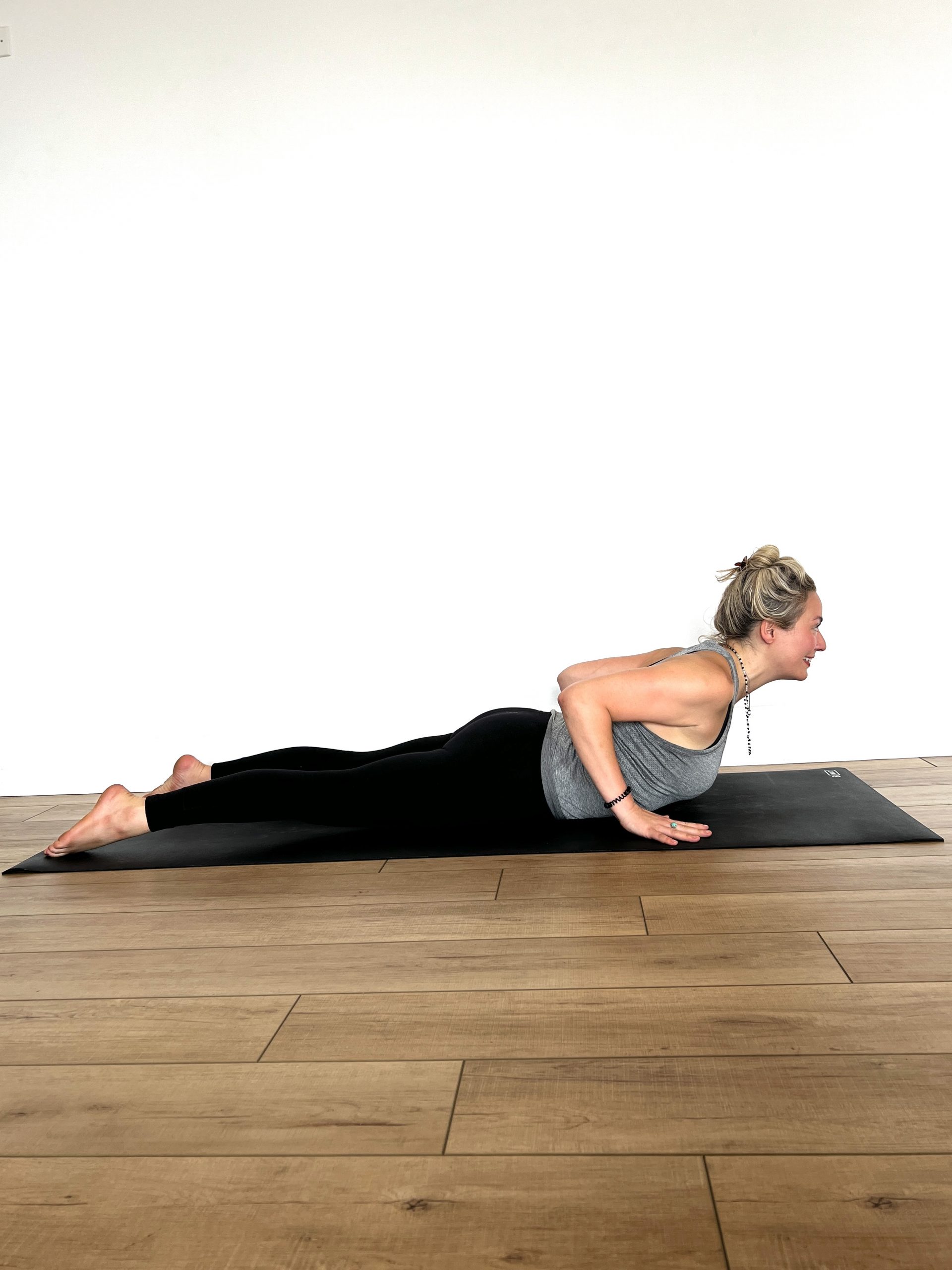
Low cobra
How to:
- Begin lying flat on your stomach with your legs stretched out long behind you.
- Bring your hands beneath your shoulders and spread through your toes and tops of your feet.
- Using the strength of your upper back, lift your chest by pressing your palms into the ground.
- As you breathe in, imagine your tailbone reaching towards your heels.
- As you breathe out, spread through your fingers.
- To come out of this asana, lower your head and use the strength of your arms to help you sit back up.
Child’s pose
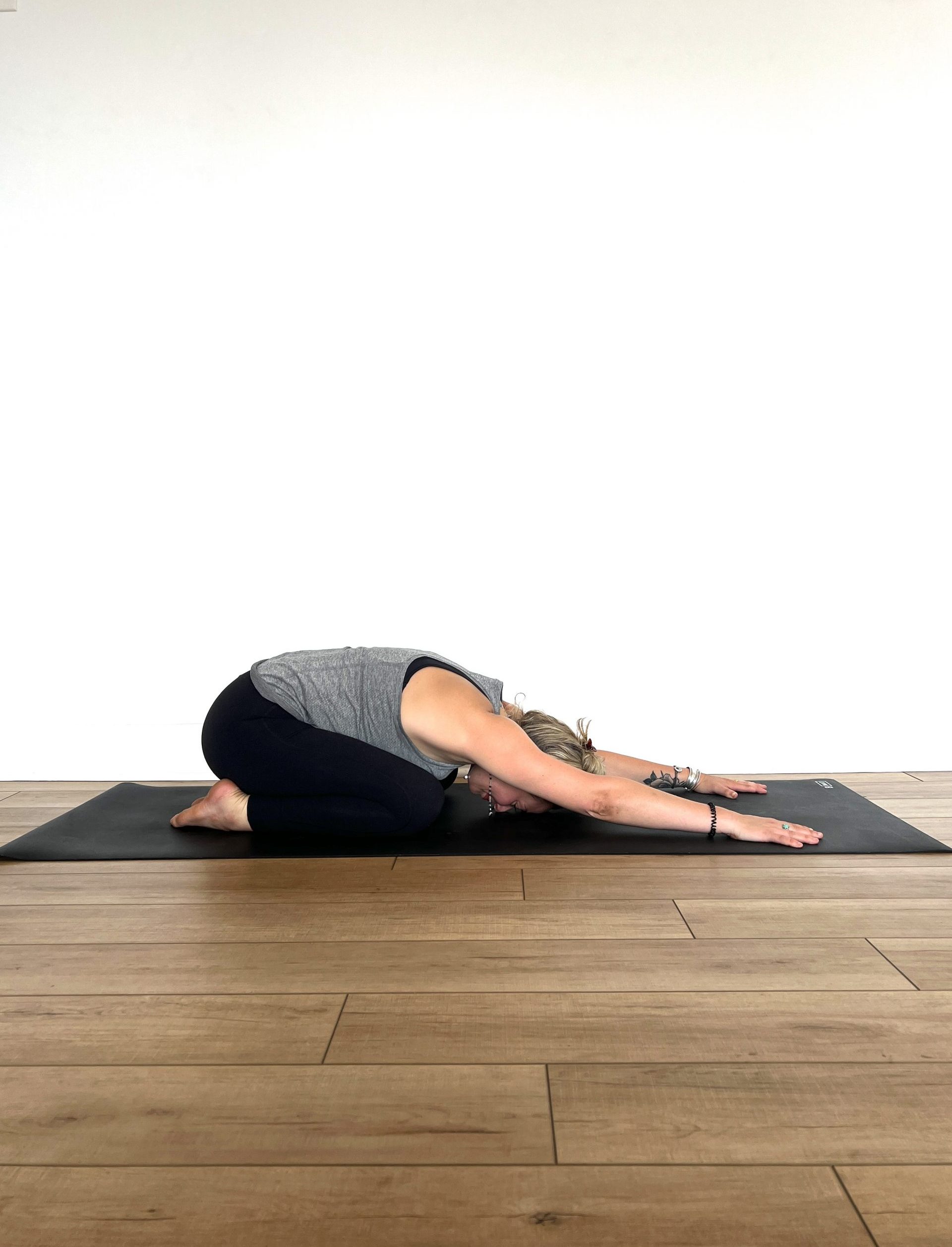
Child’s pose
How to:
- Begin in a tabletop position, which means your hands are beneath your shoulders and your knees are beneath your hips. Your toes are untucked here.
- Bring your big toes together and take your seat back towards your heels. Lower your forehead to the ground and extend your arms forward. If you’d like some support for your head or your hips, you can bring yoga blocks or pillows beneath your forehead and your seat. This will allow you to release down and focus on your breath.
- As you inhale, lengthen the back of your neck by slightly tucking your chin towards your chest.
- As you exhale, relax your jaw.
Mountain pose
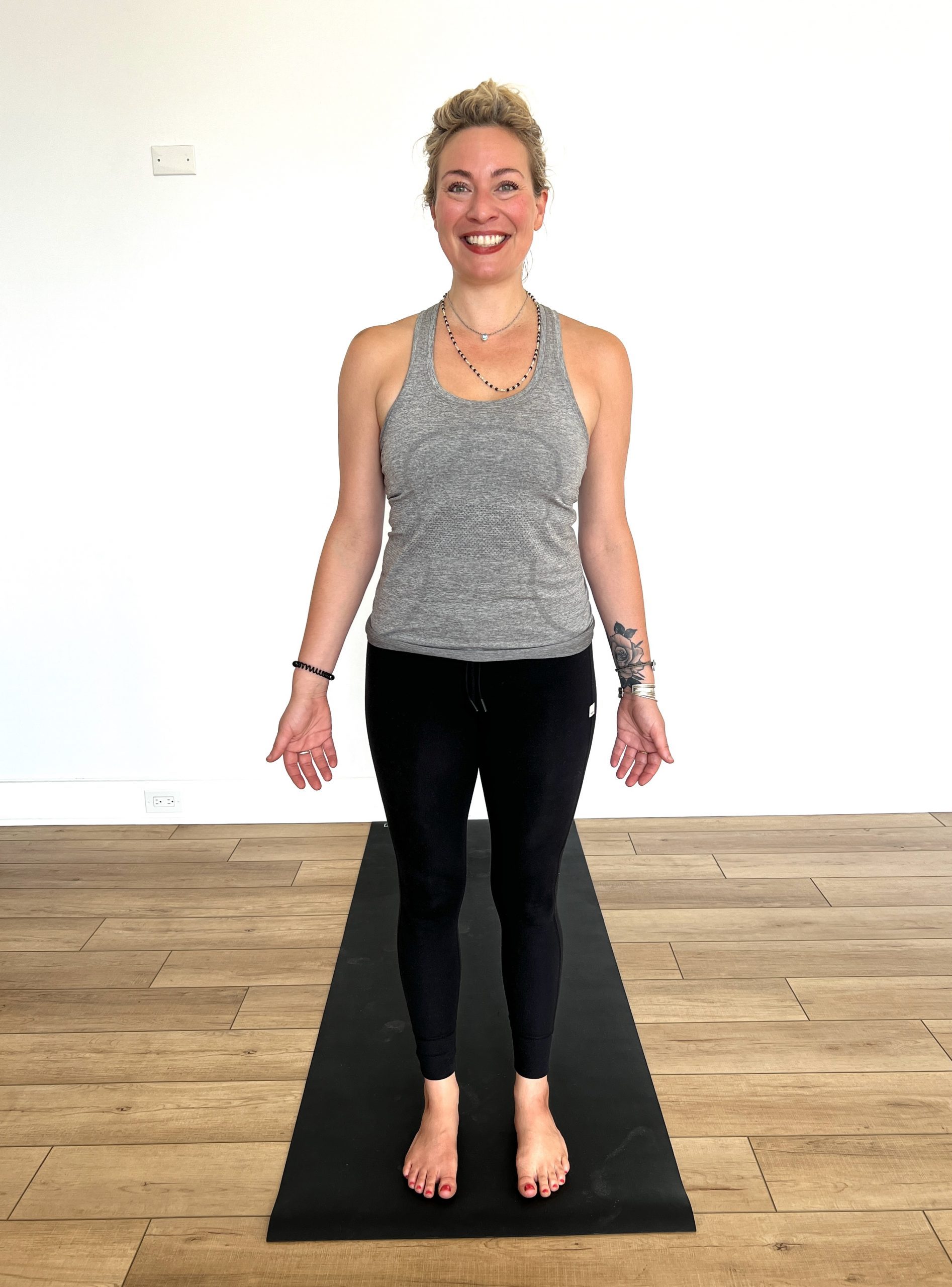
Mountain pose
How to:
- Stand up straight with your feet a few inches apart. Try to stack your hips over your heels, your shoulders over your hips, and your ears over your shoulders.
- Slightly engage your abdominals so you can allow your lower back to elongate.
- Bring your shoulder blades together as you inhale.
- Spread through your collarbones as you exhale. Your palms may face the front of your spot or they can face you.
Yoga Asanas
You can dive into the practices of yoga without moving your physical body. Use this exercise to work on steading your mind and your thoughts:
Find a comfortable place to sit that’s free from any distractions. Become aware of the following body parts as you stay seated:
- The parts of your body that are touching the ground
- Your shoulders as they move over your hip points
- The tips of your ears as they reach up to the sky
- Your tongue moving away from the roof of your mouth
- The space between your eyes
- Your lips as they part and relax
Matching movement with the breath
Working with the breath can be something you try while lying down, walking, or sitting, You can practice this at any time throughout your day:
Find a place where you can focus on your breathing, then follow these steps:
- Inhale into your low belly and pause
- Inhale into your mid belly and pause
- Inhale to fill up your chest and shoulders (pause at the top)
- Fully exhale your breath away
- Repeat this as many times as you’d like. You may even imagine your body to be like a container and as you work on the inhaling, visualize your body being filled with new energy and light. As you exhale, you may imagine anything that isn’t serving you, leaving and releasing.
Yoga Benefits
Yoga offers a myriad of benefits for both the body and mind, making it a popular choice for improving overall health and well-being. From increased flexibility and muscle strength to stress reduction and improved mental clarity, the positive effects of a regular yoga practice are undeniable. Yoga also promotes better posture, helps in weight management, and enhances respiratory function. Its ability to boost circulation and lower blood pressure contributes to a healthier heart. Additionally, yoga’s focus on mindfulness and meditation can alleviate anxiety and depression, leading to a more balanced and peaceful state of mind.
- Improved Flexibility: Yoga poses, or asanas, stretch and lengthen muscles, improving flexibility and range of motion.
- Increased Strength: Many yoga poses require you to support your body weight in new ways, leading to improved strength, particularly in the core.
- Better Posture: The focus on alignment in yoga can help improve posture over time.
- Stress Reduction: Yoga incorporates breathing exercises and meditation, which can help reduce stress and promote relaxation.
- Enhanced Mental Clarity: The combination of physical movement, breathing, and meditation can improve focus and mental clarity.
- Weight Management: Yoga can aid in weight loss or maintenance by promoting mindfulness and healthy habits.
- Improved Circulation: The various poses and stretches in yoga can help improve circulation, benefiting the heart and overall health.
- Lower Blood Pressure: Some studies suggest that yoga can help lower blood pressure, reducing the risk of heart disease and stroke.
- Better Respiratory Function: Yoga includes breathing exercises that can improve lung function and help you learn to breathe more efficiently.
- Stress Reduction: Yoga’s emphasis on relaxation and mindfulness can help reduce stress levels and improve overall mental well-being.
Yoga on YouTube
If you’re looking to practice yoga from the comfort of your own home, YouTube offers a vast array of yoga channels and videos to suit every need and skill level. Whether you’re a beginner looking to learn the basics or an experienced yogi seeking advanced flows, there’s a YouTube channel for you. Many yoga instructors and studios share free, high-quality yoga classes on YouTube, making it a convenient and accessible platform for yoga enthusiasts worldwide. With just a few clicks, you can find a yoga video that fits your schedule and preferences, allowing you to practice yoga anytime, anywhere.



